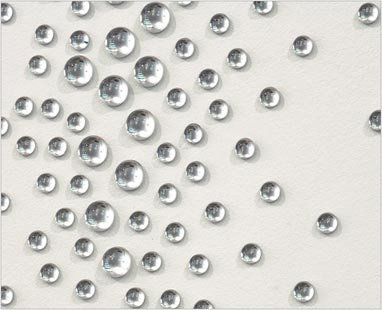Teresita Fernandez
dal 28/3/2007 al 27/4/2007
Segnalato da
28/3/2007
Teresita Fernandez
Lehmann Maupin, New York
Among the sculptures on view will be a ten-foot, shiny black mirror lying in what appears to be a bed of snow. This work considers landscape and the picturesque by placing the viewer in a shadowy reflection.

Solo Show
Teresita Fernández's exhibition continues to explore the artist's interest in opacity, transparency and the psychology of looking, with specific references to the Claude glass--an 18th-century painter's tool that contained a lustrous black mirror made of glass or obsidian and was used to view tonalities in landscape subjects. This is Fernández's first gallery exhibition since being awarded the prestigious MacArthur Foundation Fellowship in 2005.
Among the sculptures on view will be a ten-foot, shiny black mirror lying in what appears to be a bed of snow. This work considers landscape and the picturesque by placing the viewer in a shadowy reflection. The black glass is not a true mirror in that the reflections are duller, devoid of color and appear to be deeply set in an ink-like field, producing a darkly gorgeous, hypnotic effect.
In a new series of wall pieces, works are comprised of thousands of small convex glass mirrors and polished black onyx cabochons. A large rectangle resembling a projection screen is composed of onyx, while other works combine glass mirrors and polished black onyx to create reflections of both light and shadow. Among these works, both dark and light reflective surfaces create portraits of extreme opposites.
Referencing Baroque-era ceiling painting and illusionistic space, one large artwork, made in conjunction with the Graphicstudio in Tampa, Florida, hangs suspended above the viewer's head. The image created takes on an organic form not unlike an immense, cascading tree branch that is comprised of layers of precision-cut, highly polished metal. These components are woven into a reflective and intricate lattice, up through which the viewer may look.
Image from Lehmann Maupin.
Lehmann Maupin
540 West 26 Street New York
Hours: tue - sat 10 - 6pm



